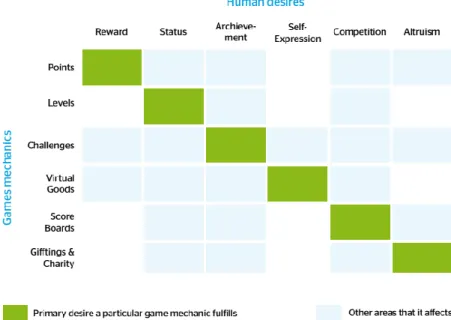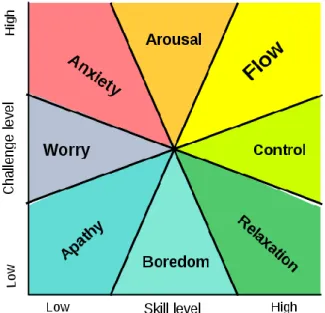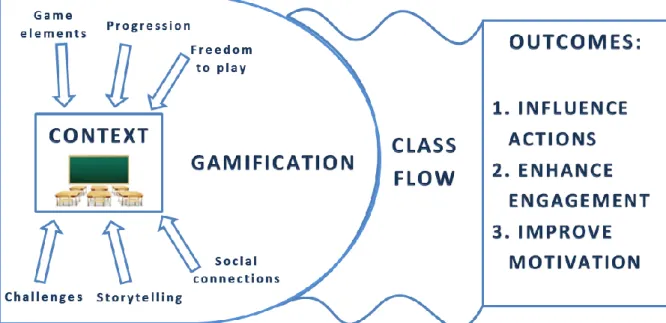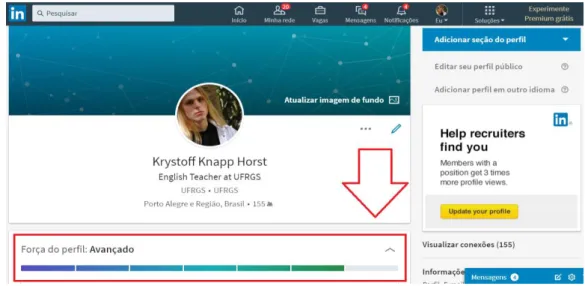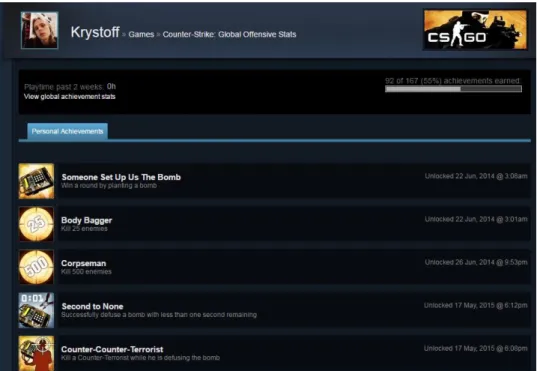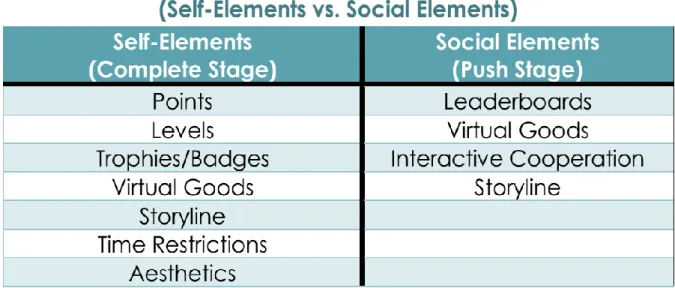A very special thank you goes to my dear son Allan, who started his journey in English this year at the age of 6 and will help me reach my big goal. Thanks to a very special woman, Pâmela, who made me wake up at 6 a.m. since my first semester at UFRGS. In gamified education, some of these features are used in the classroom to achieve specific outcomes that are relevant to the class (Marczewski, 2013).
Here we take a look at these game elements, focusing on approaches that allow teachers to take advantage of gamification methods in the English classroom. Never before have we seen changes around the world at such a rapid pace as in the past 30 years. Not much will surprise us when we look at classrooms today, i.e. they still employ the same methods as our parents' teachers: teacher-centered classes, teacher speaking most of the time, passive students in rows who pay (or don't pay) attention and copy (or don't) - or at least those who sit in the front rows do.
As for those in the back rows, they might be checking cell phones, messing up, and complaining about the class. Well, that seems to be the logic of the classroom to this day, although it doesn't seem to work well in this new era. The purpose of this paper is to explore the idea of gamification in education and to discuss claimed benefits of such technique in language teaching to suggest ways in which teachers use it in the classroom.
Active methodologies
GAME STUDIES
Game Types
- Games
- Serious games
- Simulations
- Game-inspired designs
Gamification stands as another type of game that utilizes some elements found in the other types and presents a new use of them as defined earlier. They understand all the other types of games, although they are mostly aimed at the pure fun of the user. Any type of game can be used just for fun, and can therefore be called a game.
They can be used for fun and look like real games, although they have a predetermined task. Since then, however, the genre has evolved into funny simulators and any kind of real-life simulation, such as truck simulators, farm simulators, and even goat simulators. Game inspired designs are not games, they are interfaces designed to look like games to include interaction and motivation in a fun way.
Examples of this are more commonly found in some websites, user-friendly applications or progress bars on websites such as Facebook or LinkedIn (Figure 5).
Game elements
- Freedom to play
- Agency
- Rapid Feedback
- Progression
- Special Events
- Challenges
- Badges, rewards, and achievements
- Grading Systems
- Social Elements
- Storytelling
- Music and Sounds
The image shows a screen with a dialogue between the player and an NPC (non-player character) exchanging equipment with the player. We can see some characteristics of choice structures: (1) flexibility of choices: there is a list of topics related to the story to talk about; (2) there is a set of choices to interact with this NPC, other NPCs may have other dialogues; (3) choice limitation: the player can use about ten possible answers, and the results are different; (4) there are default choices, since the NPC is a merchant, the phrase "let's exchange equipment" is often shown as an option in the dialogue; (5) clear outcomes of choices: the “goodbye” option ends the conversation; (6) consistency of choice: all choices seem reasonable given the story and the given situation. Niman's structure, because the result of decisions is taken into account when analyzing every decision or choice made.
Agency in games is the degree to which a player acts on their goals. Autonomous decisions can create good and bad outcomes, and feedback is what tells the player. The rapid feedback techniques used in games help create this zone and determine a sense of progression for the player whenever development is observed.
Special events are situations in which the game takes a different path for a moment and creates a metagame within itself. Challenges are an important aspect of the state of flow, as previously mentioned, students with too little challenge lose focus and become bored, while students with too much challenge become anxious and frustrated by imminent failure. In educational settings such as Girl Scouts or Girl Scouts, badges are common rewards for certain tasks.
Usually, games give points for completing a task or achieving a certain part of the game. While having the ability to display them on a leaderboard can welcome other game elements such as social elements. Most games present some form of narrative or storytelling, for example Monopoly presents the story of the common person trying to get rich, SimCity builds the story of a city from an empty space.
Games like FarCry, Age of Empires or Epic Mickey are examples of well-designed game soundtracks and sound elements. In education, songs have been used for some time as a teacher's tool to change classroom dynamics, whether through gap-filling activities or simply by singing songs.

ADDING GAME ELEMENTS TO THE CLASSROOM
Games and software tools
Games for the classroom as well as gamified solutions for the classroom are still scarce in the market. To use it in the classroom the teacher needs a computer, a projector, internet access for the classroom. Students had one to three contacts with the application at different points in the course.
After every game played in the app, there is an option to rate the usage of the app. Based on the high acceptance numbers in the image, Piskorz concluded that the impact of the app was significant for students (90%), suggesting that gamified environments improve learning even when difficult grammar is involved. The fun levels, around 70%, could also be considered good levels and may not have achieved better numbers due to the competitive nature of the game type.
In a final question, it assessed levels of fun, stress and interest, as well as whether they could learn something through a game and whether using the game was better than traditional grammar exercises. To better clarify other aspects of the game, we offer some additional details in the paper (Piskorz, 2016). We can easily agree with her about the students' eagerness for gamified experiences in the classroom due to the high level around this topic on the questionnaires.
Although for most ESL classes the speed of choice does not seem important since the correct answer is more important, it adds to the competitiveness of the game. The game points in the app provided an easy grading system, as the teacher could make timely assessments of who answered what, helping them with feedback on the topic and reinforcing positive answers. Agency, another element of play, is also present in this gamified scenario due to their individualized responses as well as their in-game nicknames.
Since the name of the badges means the name of the game, a fun element is added. Music and sound effect, both are also present in the application and definitely change the engagement that the game suggests with excited and curious sounds on different game screens.

How to design a gamified experience in a classroom
As with any other student-centered approach, the first thing to look at is the student, or if we're talking about gamification, the players. Kiryakova et al (2014) argues that in this way we determine the predisposition of the students to deal with the proposed game element and can model this in advance. Another relevant factor is to assess what skills the students need in the gamified process.
As for the first steps in planning: defining clear goals, understanding students, identifying learning activities for the goals, ranking them in increasing complexity, and designing a story to set the tone. In the planning part, the only step other than those usually faced by teachers seems to be designing a story to set the scene, as class planning always involves more active methodologies, specific goals, attention to student needs, activities and sequence. When one specific dynamic is chosen, which should be seen as a goal within the gamified system, the game mechanisms and game elements will emerge from that.
In the prototype part of Figure 23, game mechanics and game components are assigned, game mechanics include general interactions such as challenges, cooperation, game turns or competition. These steps should be used in the suggested order, starting from the macro perspective of game mechanics to the finer details of game components. However, there are steps that can be taken to create a gamification course plan.
Understanding the student's problems: They may have problems with the verb to be in the passive voice (was, were, are, is, am, was, be). Designing Game Components: Scoring, one point for each verb “to be” correctly identified in a sentence. Creating a scenario: a board or map divided into "road sentences" in passive and active.
Prototype game level: in the first level routes are identified as active or passive. Refinement of the game level: new "road sentences" are proposed with different tasks, activities for filling the gaps in the same context.
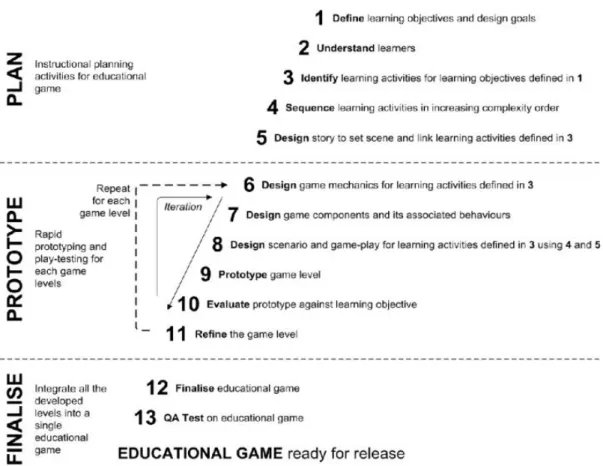
Other gamified possibilities
In this short example, students move from simple tasks, such as identifying passive and active constructions, to more complex tasks, moving to passive or active in a gamified environment. Creating a gamified system for the classroom may seem like a long process for some teachers, larger and varied groups, so the next section will provide more practical options for the classroom. Don't think that your gamified experience will be mastered by the students in one class.
Many classroom management systems have been presented in the previous sections; they can increase motivation away from the classroom.
FINAL CONSIDERATIONS
How to use game elements to enhance learning: applications of gamified learning theory.

